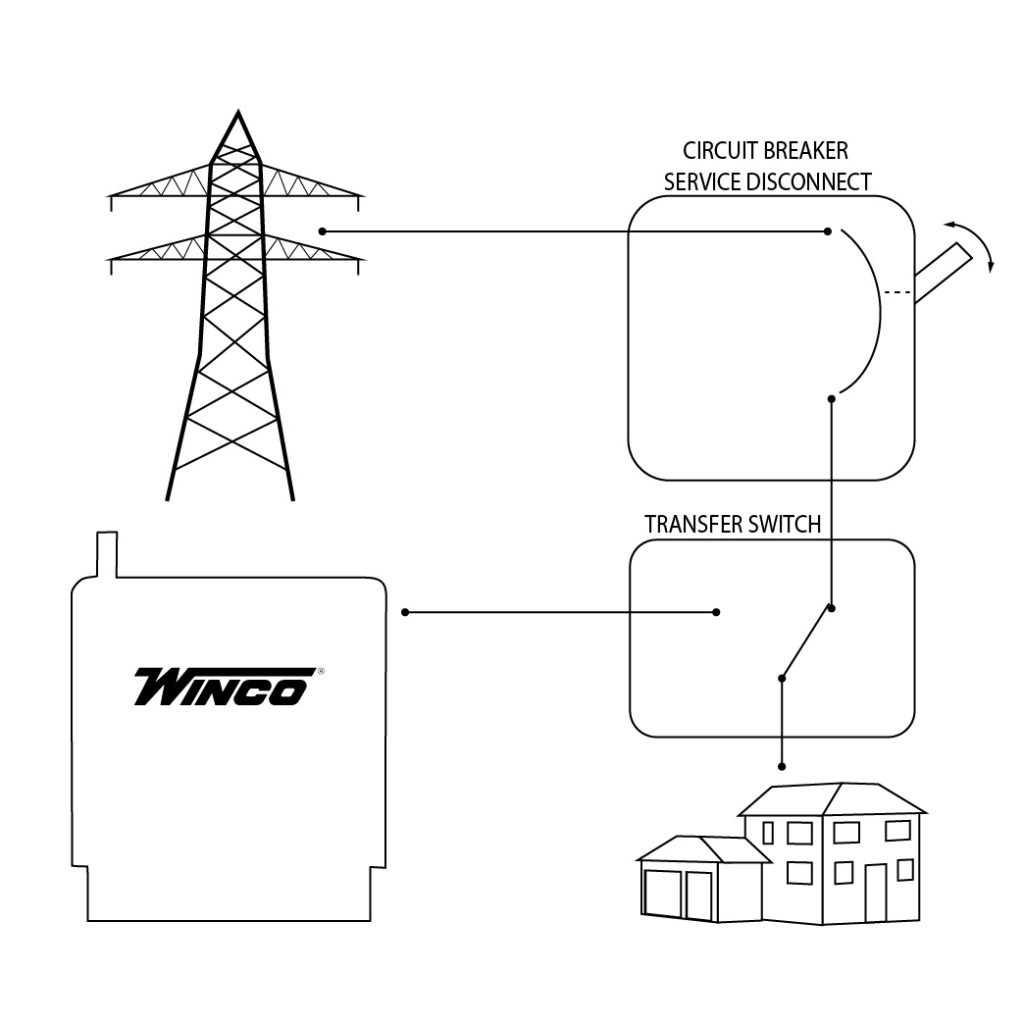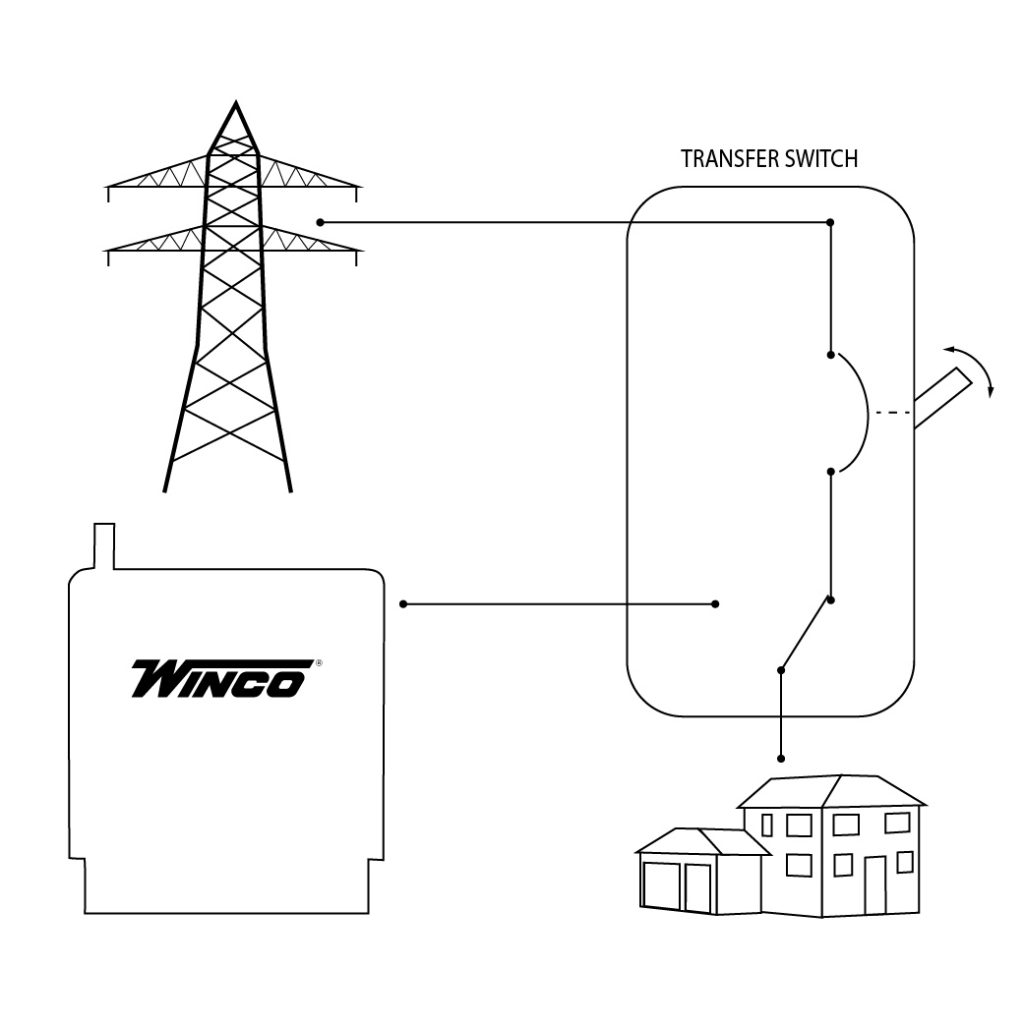The National Electric Code (NEC) requires a way for disconnecting the electrical service where it enters a building. This main circuit breaker prevents the building from demanding too much current from the utility creating a dangerous conditions. This circuit breaker may be in a separate panel or part of a service entrance rated transfer switch.
Non-Service Entrance Rated
There isn’t any over-current protection within a non-service entrance rated transfer switch. Therefore, when you install this type of transfer switch, it will be after the service disconnect panel.
If you find a non-fusible manual transfer switch, it does not have over-current protection. Non-fusible switches are not service entrance rated and cannot have the over-current protection added.
Service Entrance Rated
Service entrance switches will have a service disconnect at the utility side. This installation requires less components, making it ideal for new construction, which can be more cost effective.
At WINCO, we offer ASCO service entrance rated switches equipped with an additional disconnect breaker.



Was that verbiage in the 2017 nec code book regarding a non rated service entrance Transfer switch
Hello Ron,
Emergency power systems are covered in Article 700. The requirements for transfer switches are covered in 700.5. The NEC does not distinguish between service and non-service rated transfer switches. The requirements for Service Equipment are in Article 230 Part V. The manufacturers of switchgear take these two NEC sections into considerations when designing and gaining approval for their switches.
Thank u for your fast response u guys are great
question on voltage,120/240 10 does that mean single phase?
Yes, 120/240 1Φ means single phase. I am guessing that was what you were typing.
Great post! When it comes to the difference between service and non-service entrance-rated transfer switches, it all boils down to safety and compliance with the NEC. Service entrance-rated transfer switches include a main circuit breaker, which acts as a disconnecting means at the point where electrical service enters a building. This breaker ensures that the building doesn’t exceed the utility’s current capacity, preventing potentially hazardous situations. On the other hand, non-service entrance-rated transfer switches lack this main circuit breaker and may require a separate panel for disconnecting the electrical service. It’s crucial to adhere to NEC guidelines to maintain a safe and reliable electrical system.